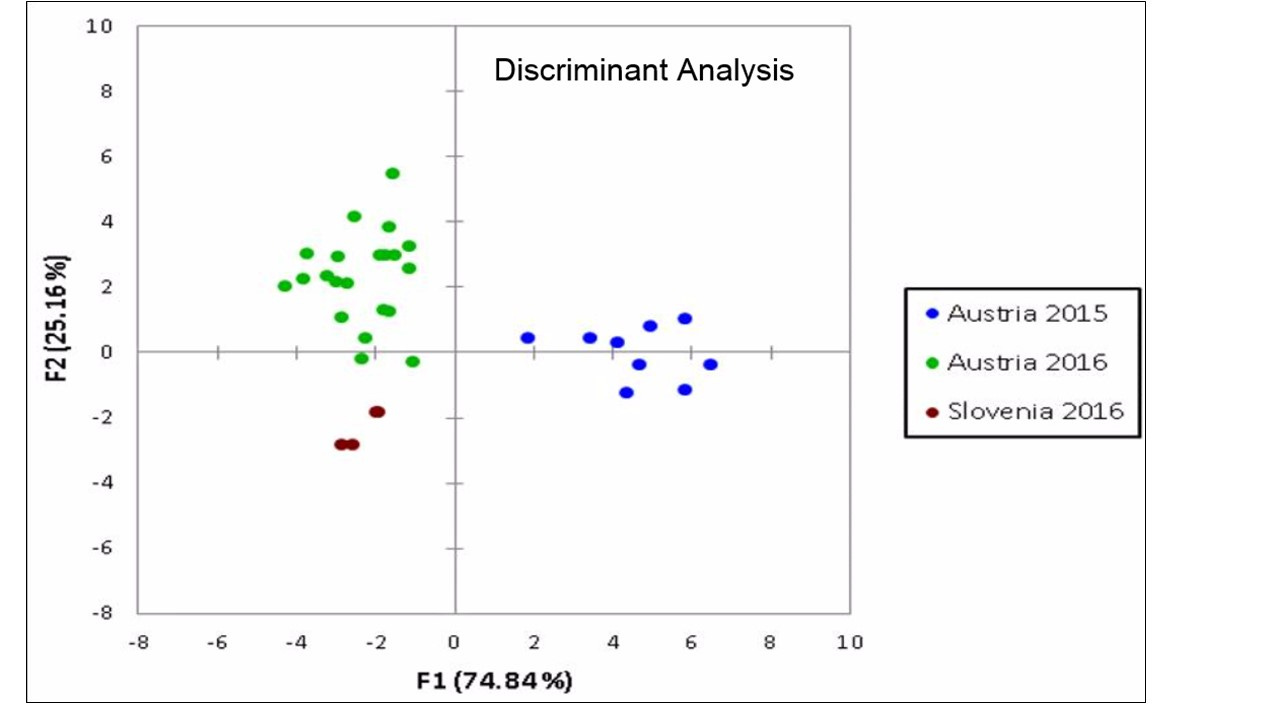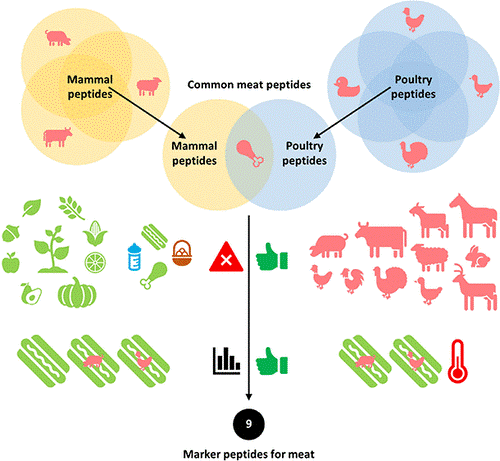This is The Rotten Apple, an inside view of food integrity for professionals, policy-makers and purveyors. Subscribe for weekly insights, latest news and emerging trends in food safety, food authenticity and sustainable supply chains.
Save the date: Live training event, Thursday 12th October
An introduction to food fraud (video)
Targetted versus non-targetted tests for food fraud detection
Fascinating food fraud insights from food control officers
Food Safety News and Resources
Food Fraud News and Recent Incidents
🎧 Listen Now (for paying subscribers) 🎧
Hello everyone,
Welcome to The Rotten Apple. If you’re new here, I’m Karen and I spend hours each week trawling the interwebs so I can keep you up to date with the latest knowledge in food safety, food fraud and sustainable supply chains with not-boring, ad-free articles and news roundups.
This week’s issue is a food fraud special, with an introduction to food fraud testing, insights from enforcement professionals, and a nerdy dive into targeted and non-targeted test methods. Plus, a short video introduction to food fraud.
Hope you like it!
Karen
P.S. This independent publication is made possible by my paying subscribers. If you value high-quality, ad-free content and want to join hundreds of happy supporters, please consider upgrading to a paid subscription today. It costs less than $2 per week and is tax-deductible if you work in/with food*.
*(probably! 😉)
Save the Date: Live Training (Free)
This month’s live event is a one-hour training session. All are welcome, and paying subscribers get access to a recording.
Topic: Pest Control and IPM (Integrated Pest Management) in Food Businesses
October 12th UTC 08:00 | London 9:00 am, Hong Kong 4:00 pm, Sydney 7:00 pm, Denver 2:00 am | Click to convert to your local timezone |
Food Fraud - an Introduction
When people ask me what I do, and I tell them I’m a food fraud prevention specialist they look at me blankly. Then I tell them “so you know how some olive oil is fake?…” and understanding starts to dawn.
Or, I could just show them this video: it’s an easy-to-understand introduction to food fraud for consumers and newbies (13 minutes) - made for Americans but relevant for people everywhere.
Targetted Versus Non-targetted Food Fraud Tests
An introduction to the two classes of food fraud test methods
Choosing the right analytical method for food fraud detection is difficult. Not all food labs can do all tests, so food fraud professionals should be aware of the options – and limitations – in food fraud testing before they commission tests.
Food fraud test methods can be classified into two groups: targetted testing and non-targetted testing. Tests that are ‘targetted’ are those that search for the presence - or absence - of a specific component (target) in the food. Non-targetted test methods usually work by comparing the profile of a food with a database of authentic samples, to determine whether the test sample is genuine or not.
An example of targetted food fraud testing is checking spice blends for the presence of the illegal colourant Sudan IV. An example of a non-targetted test is one that can distinguish between salmon from different geographical regions by combining results from two mass-spectroscopy methods and comparing multiple data points for the test sample with a database of reference samples.

Species testing for food fraud detection
Food fraud that involves adulteration is sometimes detected using species testing, more properly called speciation analysis. For example, dried camomile adulterated with myrtle leaves would contain both camomile and myrtle DNA and a speciation test would detect the adulteration. Likewise, testing that reveals pig DNA in meat that is labelled as ‘beef’ could also indicate food fraud.
As with most food fraud analytical tests, speciation tests can be either targetted or non-targetted.
Targetted speciation tests are used to detect a specific type of fraud or adulteration. For example, beef mince that is suspected of containing undeclared pork can be tested for the presence of pig DNA. However, the absence of pig DNA does not mean that the ‘beef’ is genuine, because that test would not reveal the presence of horse meat.
In species testing, non-targeted tests can be used to reveal whether a sample is contaminated with the DNA of many different species, or species that are unexpected, by comparing fragments of DNA from the test sample and comparing them to databases of genetic fragments from hundreds of species. For example, a non-targetted test might reveal the presence of donkey meat in minced ‘beef’, even if donkey hadn’t been flagged as a potential adulterant.
Examples of DNA-based food fraud tests
Quantitative PCR (qPCR) tests are a targetted method. They make use of a technology that allows for tiny fragments of DNA in a sample to be multiplied thousands of times so they can be detected. The process that multiplies the DNA is called the polymerase chain reaction (PCR). It is the same technology that is used in medical diagnostic tests like Covid PCR tests.
Quantitative PCR technology is capable of giving a result even when DNA is present at very low levels in the sample. qPCR tests are cheaper than non-targeted tests because they only need to look for one type of DNA. However, they only provide results for the specific species being tested for.
Next Generation Sequencing (NGS) is a non-targeted DNA-based method for speciation testing. The method makes use of sections of DNA called primers which bind to DNA fragments so that they can be amplified and identified. As long as the recovered DNA has been included in a reference database of species, then the source of the DNA can be identified.
Next-generation sequencing is more expensive and less sensitive than qPCR methods, with a limit of detection of 0.5% compared to 0.01% for qPCR. However, being able to find multiple species with one test is an advantage.
Limitations of DNA testing for food fraud
Although all foods contain ingredients from animal and plant sources, not all foods contain intact DNA. In heavily processed or refined foods, the DNA can be too degraded for DNA testing to work. Some foods also contain chemicals that stop the tests from working.
In 2021, the sandwich chain Subway was accused of food fraud by plaintiffs who sued the company for supplying tuna sandwiches in which the tuna component was alleged to be “not tuna and not fish.” Lawyers for the plaintiffs said their claims were based on lab tests of “multiple samples” which found the ‘tuna’ was “a mixture of various concoctions that do not constitute tuna, yet have been blended together by defendants to imitate the appearance of tuna.”
The lawsuit was eventually dismissed, after more tests, performed by a different laboratory found the sandwich filling was ‘real tuna’. Experts questioned the test methods used by the original laboratory and explained the canning process for tuna can degrade DNA, confounding tests.
Another challenge is that not all food species have ready-made qPCR tests, in which case, NGS must be used instead. NGS, however, is not without its limitations. For example, it is not always possible to distinguish between closely related species using NGS and sometimes only the genus or family of the adulterant animal or plant can be determined.
NGS can also reveal non-fraud-related contamination, such as the presence of insect pests, or even rodent pests in foods.
Targetted or non-targetted testing, which is best?
Both classes of food fraud tests have a place in food fraud detection and research. Targetted tests are usually cheaper and faster than non-targetted tests, and are particularly useful if the food has a history of adulteration with a particular adulterant, such as red-coloured spices and Sudan dyes.
Non-targetted tests are usually more expensive than targetted tests, but they can be used to reveal adulteration with unknown, or unexpected materials. They can also be used to help detect non-adulteration-type frauds, such as country of origin fraud.
In short: 🍏 Food fraud analytical tests are classified as either ‘targetted’ or ‘non-targetted’ 🍏 Targetted test methods reveal the presence of a known adulterant, such as an unauthorised dye added to a spice 🍏 Non-targetted test methods include multi-species DNA-based tests like next generation sequencing (NGS) and spectroscopic methods which compare test samples with databases of reference samples 🍏 Targetted test methods can be cheaper and faster than non-targetted methods, but only reveal known or expected food fraud issues 🍏 Non-targetted tests can reveal unexpected adulterants and can be used for detecting non-adulteration frauds, such as country of origin fraud 🍏
Main source (speciation testing):
Learn more:
Target and Non-Target Approaches for Food Authenticity and Traceability - A Review (2021)
Fascinating food fraud insights from food control officers
Researchers have surveyed ninety-five food control officers in Finland, and interviewed seventeen more closely, asking detailed questions about their experiences with food fraud.
Sixty-nine percent of respondents said they had discovered ‘suspected’ food fraud and forty-three percent said they had definitely detected food fraud or other food crime in the past five years.
Most who had detected fraud had not reported it to the police. Key challenges for food control officers with respect to food fraud detection and enforcement are inadequate resources, difficulties in establishing the authenticity of documents, and not knowing whether to inform police about suspected food fraud.
🍏 Read more about the survey and results here 🍏
Our food safety news is expertly curated (by me!), so you get only the most interesting, focused information from around the globe. Click the link below to view.
Food Safety News and Resources
2 October | Food Safety News and Free Resources | Still no answers in 800+ mass food poisoning outbreak (Finland) | Microbiological risk assessment guidance (FAO) | Cultivated chicken has been recognised as kosher by a major certifier (Global) | Food Safety in the Context of Food Industry 4.0, Guidance from SSAFE (Global) |
What you missed in last week’s email
Celebrating Food Loss Awareness Day
Food safety non-conformances and how to avoid them
Food fraud: big business versus small businesses
Chemical hazards in soy-based foods
Food Fraud News and Recent Incidents
Below for paying subscribers: Food fraud news and incident reports
📌 Food Fraud News 📌
Beef or Milk? Chicken or Egg? - non-DNA Tests for Vegetarian Foods
If you want to know whether a vegetarian food contains undeclared meat, DNA testing does not work. At least not for vegetarian foods that contain dairy ingredients or egg. That’s because DNA test results do not distinguish between beef and cow’s milk or between chicken meat and egg.
To solve this problem, researchers created a testing approach based on the use of ‘marker peptides’. Peptides are the building blocks of proteins and can be isolated from meat, dairy foods and eggs. The researchers chose nine peptides to be ‘marker’ peptides based on their presence and absence in different animal-derived and plant-derived ingredients.

The marker peptides allowed the researchers to




